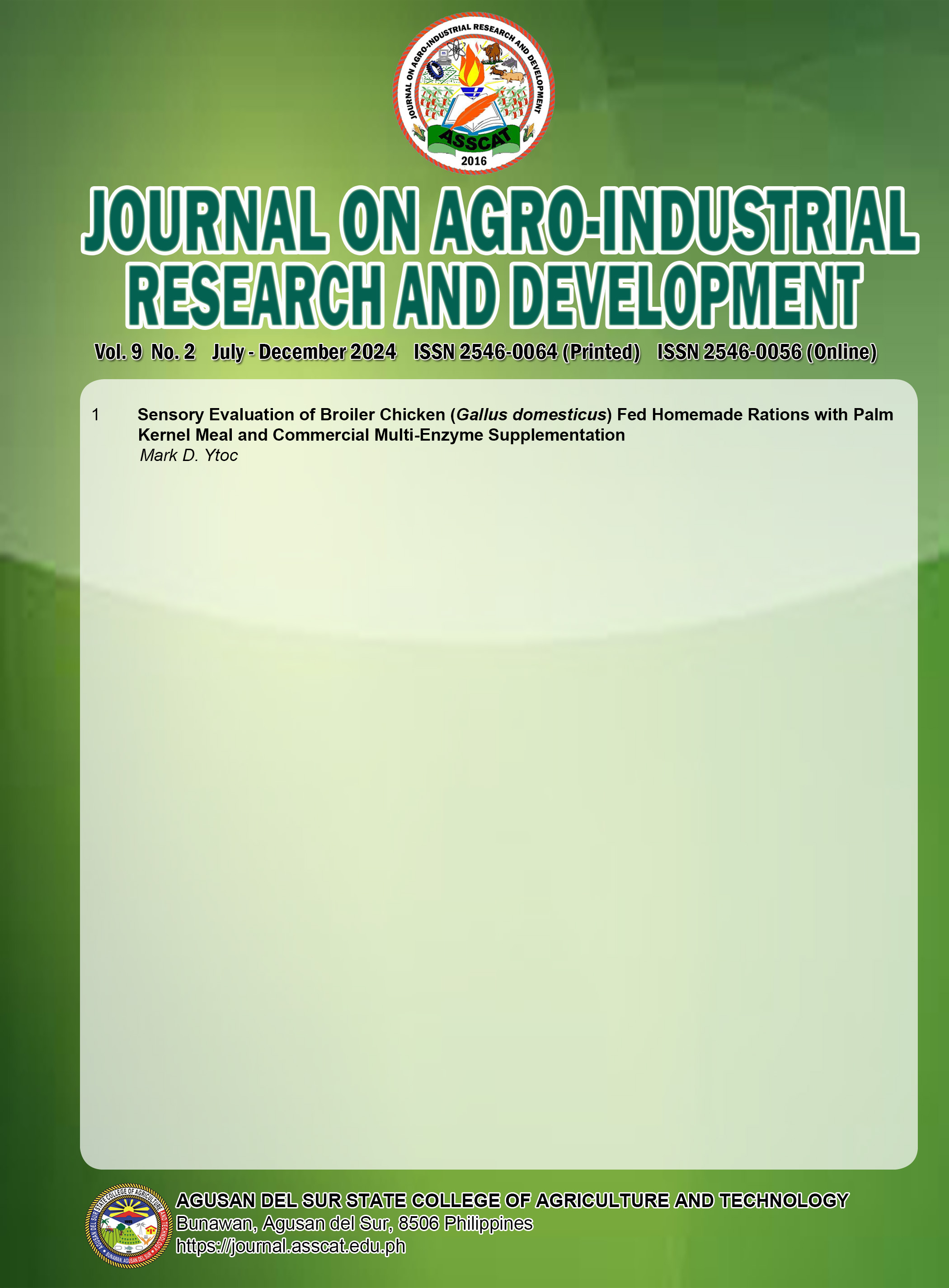Sensory Evaluation of Broiler Chicken (Gallus domesticus) Fed Homemade Rations with Palm Kernel Meal and Commercial Multi-Enzyme Supplementation
Keywords:
Commercial Multi-Enzyme Homemade ration, Gallus domesticus, Meat quality, Palm Kernel MealAbstract
This study evaluated the sensory characteristics of broiler chicken meat from birds fed homemade rations supplemented with varying levels of Palm Kernel Meal (PKM) and Commercial Multi-Enzyme (CME). A total of 135-day-old chicks were randomly assigned to nine treatment combinations in a 3x3 factorial design, with factor A (PKM at 0%, 5%, and 10%) and factor B (CME at 0%, 0.2%, and 0.4%). The evaluation focused on dressed weight, dressing percentage, aroma/odor, texture, taste/flavor, tenderness, juiciness, and overall acceptability. Data were analyzed using Analysis of Variance (ANOVA) for a Completely Randomized Design (CRD), followed by Tukey’s Honest Significant Difference (HSD) test to determine significant differences among treatments. Results revealed that Treatment 3 (0% PKM, 0.4% CME) produced the heaviest dressed weight, while Treatment 7 (10% PKM, 0% CME) had the highest dressing percentage. Sensory evaluation indicated that Treatments 4, 7, and 8 were rated as having the most tender meat. Moreover, significant differences (p<0.05) were observed in aroma/odor, texture, taste/flavor, juiciness, and overall acceptability among broiler chickens fed different PKM levels. Additionally, the interaction between PKM and CME significantly influenced the aroma/odor of the meat. These findings suggest that incorporating PKM and CME in homemade rations can influence the sensory attributes of broiler chicken meat, highlighting their potential application in poultry nutrition for improved meat quality.





